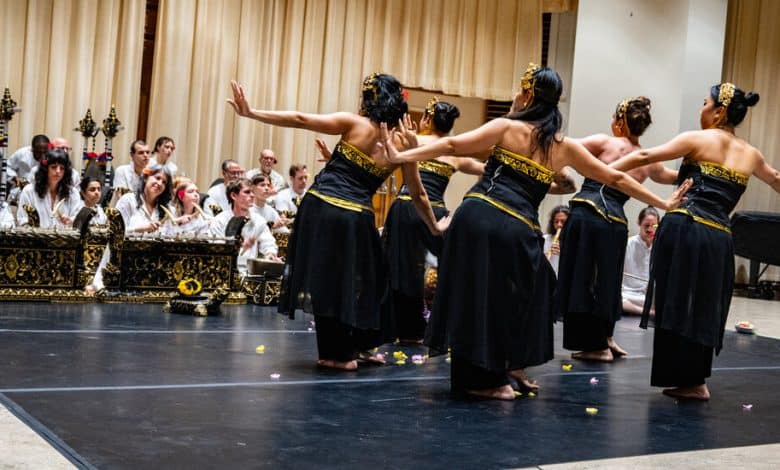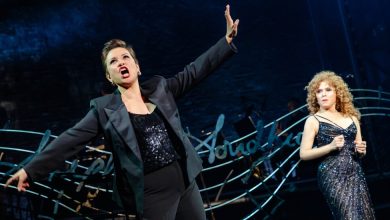Gamelan Dharma Swara Finds Its Authentic Self

On Mother’s Day in the main hall of the Ridgewood Presbyterian Church in Queens, a handful of members of Gamelan Dharma Swara, an ensemble that plays traditional and contemporary Balinese music, practiced its new piece, “Pagar Ayu.” It was a joyous cacophony — a melding of metallophones, other percussive instruments and flute — though it was still in need of refinement.
“You’re giving away some part of yourself to the people,” Victoria Lo Mellin, Dharma Swara’s president, directed the musicians. Lo Mellin, 38, who has been with the ensemble since 2007, tried to communicate a sense of urgency. The world premiere of “Pagar Ayu” — a moment to celebrate the group’s rebirth in the wake of the pandemic with a work created expressly for its members — was less than two weeks away.
There are more than 100 gamelan groups in the United States. Some perform the music and dance styles that developed on the Indonesian island on Bali; others take up those from the nearby islands of Java or Sunda. Some hew closely to the traditions rooted in gamelan’s 1,300-year history; others mix in, either subtly or liberally, Western and modern influences.
Dharma Swara is firmly situated in the Balinese branch of the music, which has a generally faster tempo — think wind chimes more often caught up in a glorious gale than riding a contemplative breeze — and uses fewer gongs and more gangsa, a type of ornate bamboo-and-brass metallophone with keys that are suspended above the instrument’s body. But as much as the members embrace gamelan and its origins, they are also mindful of their own.
“We have a personality that’s uniquely American. It’s innately American,” Lo Mellin said.
Establishing an identity that is distinct, authentic and respectful has been Dharma Swara’s ongoing quest for more than a decade. After preparing for and performing at the 2010 Bali Arts Festival, the first time a Western ensemble had been invited to Indonesia to participate in the yearly celebration of Balinese culture, members started to ask themselves what else they could achieve.



